How to Successfully Measure KPIs (and Mistakes to Avoid)
Last Updated on January 1, 2021 by Owen McGab Enaohwo
Without knowing your key performance indicators (KPIs), how would you know the progress of your business efforts?
KPIs are like health checks for your business processes and activities. Knowing that, how do you know which KPIs are important to measure the health of your business efforts, and which ones aren’t necessary?
This episode of the Process Breakdown Podcast with Dr. Jeremy Weisz features Carl Cox, an executive growth leader and strategic planner with over 15 years of experience in creating strategic plans and executing them.
Mr. Cox talks about the importance of KPIs, the most common indicators that lag your business’s operations, and the ones that improve them.
He also shares his first-hand experiences working with companies to improve their KPIs, the biggest mistakes companies are making with key indicators, and the things they should be doing instead.
Listen to this audio
Listen to more interviews
Key Resource List
Show Notes
0:05 – Podcast introduction.
1:00 – Dr. Weisz shares the best solution for documenting standard operating procedures, SweetProcess, highlighting a 14-day free trial.
1:50 – Introduction of the guest speaker, Carl Cox.
2:20 – The guest shares how to know which KPIs to track and measure, and which ones to not waste time on.
4:21 – Mr. Cox talks about a construction firm he worked with and how they improved operations by 75% by discarding unnecessary KPIs.
7:25 – The guest speaker shares an example of lagging indicators and the common mistakes companies make when it comes to KPIs.
11:54 – The guest shares his thoughts on using tools and software for tracking your key indicators.
12:54 – The guest shares an example of an establishment that was tracking the wrong KPIs and how he went about solving this issue with them.
15:51 – Mr. Cox shares another problem that companies make when tracking KPIs.
18:30 – The guest talks about how to create a strategy for measuring KPIs and your sales channels, and how he does it.
21:56 – Mr. Cox talks about his experience at Lightspeed, a company he helped triple in size by removing a lot of process waste.
27:04 – Mr. Cox shares the first thing you should think about when it comes to KPIs.
27:59 – Outro
Guest Profile
Carl Cox is the founder of 40 Strategy, a management consulting company whose aim is to improve the business strategy of companies and help them create the best practices to measure their business progress.
Mr. Cox is also a thought leader in operations, accounting and finance. He has been a key decision-maker in helping four organizations scale and double in size.
In his spare time, he is on the board of several organizations and has coached 25 seasons of various sports, including football, basketball, and baseball.
Transcript of the interview
Intro: Welcome to the Process Breakdown Podcast where we talk about streamlining and scaling operations of your company, getting rid of bottlenecks and giving your employees all the information they need to be successful at their jobs. Now let’s get started with the show.
Dr. Jeremy Weisz: Dr. Jeremy Weisz here, host of the Process Breakdown Podcast, where we talk about streamlining and scaling operations of your company, getting rid of bottlenecks and giving your staff everything they need to be successful at their job. Past guests include David Allen of Getting Things Done, Michael Gerber of the E Myth and many, many more, so check all the other episodes.
Dr. Jeremy Weisz: Before I get to today’s guest, Carl Cox, 40 Strategy, this is a must-listen-to episode, Carl. We’re going to be talking about strategy and KPIs, and this is what fuels so you know what’s going on in your business, so I’m excited to chat about it. This episode is brought to you by SweetProcess, so if you’ve had team members ask you the same questions over and over again, and it may be the 10th time you spent explaining it, there is actually a better way, and SweetProcess is a software that makes it drop-dead easy to train and onboard new staff and save time with existing staff.
Dr. Jeremy Weisz: And when I was talking to Owen, the founder, I figured not only universities, banks, hospitals, software companies use it, but first responder government agencies use it in life or death situations to run their operations. So you can use SweetProcess to document all the repetitive tasks that eat up your precious time, so you can focus on growing your team and you can sign up for a 14-day free trial, no credit card required, it’s sweetprocess.com, sweet like candy, S-W-E-E-T, process.com.
Dr. Jeremy Weisz: I’m excited to talk to today’s guest, Carl Cox, he’s CEO of 40 Strategy and he spent over 15 years of executive leadership, creating strategic plans and delivering results. And Carl’s been a key decision maker to help multiple organizations double their size or greater, and he’s a trusted advisor for executives and board members, and he does all of this with a wife and four kids. So Carl, thanks for joining me.
Carl Cox: Thank you so much, appreciate the introduction.
Dr. Jeremy Weisz: We were talking, before we hit record, about strategy, KPIs, and you say people spend 4% of the year on strategy, which is 40 hours, they should have you guys handle it. And my argument was they should be spending more than 2% on strategy, more than 40 hours, and also how important KPIs are. And some people don’t have KPIs, some people have KPIs and maybe they should have different KPIs, so I want to start with the KPI conversation because I just get that question a lot when I’m talking to people, and you’re the expert at it. Just talk about lagging versus leading and what people should be tracking, then we can talk about some specific examples.
Carl Cox: Absolutely. So one of the… When you go through and ask questions of what are your goals, it’s a common thing. So what are your KPIs? What are your goals? And when you just have somebody write them out and you’re not leading them, so to speak, using the same thing to something, 80 to 90% of their goals will be lagging indicators. So a lagging indicator by definition is something like net income, or sales, or gross margin, is the end result. And any reasonable organization and company is thinking about that end result. The problem is, usually you can’t control it.
Carl Cox: The real key is focusing on the leading indicators. These are the two to three to four different measurements that actually have an impact on the outcome. And so when we focus on those different things and we actually start measuring those leading indicators, we can actually have a positive end result.
Dr. Jeremy Weisz: Yeah, I totally get it. And we’ll go through an example because I could see, okay, a lagging indicator would be like, “Our revenue went up, our revenue went down,” but by the time it’s down, it’s not too late, but it’s like, well, that maybe happened three months ago and we should have been tracking it at that given time. Right?
Carl Cox: That’s right. That’s right.
Dr. Jeremy Weisz: So there was a construction firm you worked with, so talk about what you walked them through and what you saw as the leading and lagging and what happened.
Carl Cox: So for this particular client, this great client that I work with, their initial discussion was, they wanted to focus actually on the finite specific measurements. So they do a process of surveying. And so in these particular areas, they’ll go through, and they’re like, “How do we make this small improvement better? Because this takes X amount of time, and we want to get to X minus one minute.” That was the thinking. And-
Dr. Jeremy Weisz: More efficiency stuff.
Carl Cox: It was all about efficiency. And so they were thinking, “If we get more efficient, we’re just going to be able to get more surveys out.” The challenge and problem with this was it forgot about the big picture. And in this particular case, it was really about throughput. It didn’t matter how many more times they did that quicker, if they couldn’t get more surveys out the door, they were going to have no efficiency.
Carl Cox: And so when we pulled back and we actually looked at… The problem wasn’t necessarily efficiency, it has all the waste in between each individual step. And through that, we identified about 70% improvement, where we can take it from over a hundred hours over a period of time, and bring it down to 40 hours. And when you think of that improvement, if we can get, basically, two to three times more throughput with the same amount of people just by simply eliminating waste, it’s a multimillion dollar event for this organization. The throughput and the ability, and if you get so much more, it’s incredible.
Dr. Jeremy Weisz: So what would be an example of a leading indicator in that situation? What are they tracking?
Carl Cox: Yeah. So in this particular case, a good example… Once again, the lagging indicator that they’re focusing on was, once again, these individual things. What was more important is, the leading indicator is, there was a key measurement, effectively, one of the bottlenecks that they had to measure, there’s an individual that has to effectively stamp the survey.
Carl Cox: And if that doesn’t get stamped and that doesn’t get approved, everything else doesn’t matter. It’s like the one thing that has to take place and get through. And so by measuring that particular item and making sure that action takes place, then we can actually get more output. All of the other things around the elements are just other measurements, they’re other KPIs. And by focusing on those, it actually distracts you from actually getting more output to the organization.
Dr. Jeremy Weisz: Yeah. That makes sense. So overall, they’re tracking the total time, but you found this bottleneck was occurring and that was holding up everything else from happening. So if they’re tracking that one bottleneck, they improve that one bottleneck, they track it, and if they see it fluctuate or go up or down, that is going to move the needle as far as everything else after that.
Carl Cox: That’s exactly right.
Dr. Jeremy Weisz: And do you find that typically, what will be another example of a bottleneck that was freed up that you would consider a leading indicator or another example of a company, just to give people an example of, here’s some examples of leading indicators of companies, so they get an idea.
Carl Cox: Yeah. So I think one of the most common things, and it’s not something we discussed earlier, but I think it’s probably the one of the easiest ways to understand it is sales. Everybody’s selling. Everybody’s trying to sell their thing, whether it’s a physical object or whether it’s a consulting situation. And often, once again, people just focus on, “I just want to increase sales.” And so they go… So one of their success measures might be, “We’re going to hire two people this year, and we’re going to end up increasing sales because we’re hired two people.” Well, the problem with that is, Jeremy, to just go ahead and ask you a question here, how long does it take to hire a salesperson?
Dr. Jeremy Weisz: A long time. And train them.
Carl Cox: Yeah. So let’s just say it takes three to six months to hire somebody, it’s going to take them three to six months to actually start performing. So if you’re sending a strategy to hire two salespeople and impact this year sales, the likelihood of that happening is, not zero, but it’s not high.
Dr. Jeremy Weisz: Yeah.
Carl Cox: That honestly is a strategy to impact two years from now. That’s when those sales people are going to help. So the things that I talk about is, “Okay, what are we doing today, the salespeople doing today to make a difference?” So a classic lead indicator, just being simple, “Are we making a phone call? Are we doing an email? Are we following up with a…” Let’s say we had something come down from, we had a lead come from the internet, how quickly did we follow it up? Something I read recently is, if you don’t follow up with a lead that comes from the net within 30 minutes, you have a 70% less likelihood of actually connecting with them. So-
Dr. Jeremy Weisz: Yeah. I was talking to someone, totally, the other day, and they were like, “Oh, they recommended following up within five minutes.” I’m like, “Wow, that’s amazing.”
Carl Cox: So an organization I used to work with prior to this one, we had, that was ultimately where we wanted to get to, but basically we were like, “If we don’t get to sign within an hour, we’re done.” We completely lost the opportunity, because you think about it, you and I are working hard, we have all these different things going on. When I’m on the internet and I’m taking a look at something, that’s when I’m thinking of you. And when I decide to go off of that, I’m already on something else.
Carl Cox: So my mind share has already shifted. So leading, what you could have just said is, “How quickly are we responding to capture a lead?” That’s a human being who wants to do business with you. And if we don’t respond quickly, it doesn’t mean you’ve lost it forever, but the opportunity, being there right away, is huge. And there’s a very large firm that, I’ve had this a couple of times, I’m sure you’ve had it too, where I have looked on the internet, and I said, “Yes,” and I’ve had somebody call me in five minutes. And your experience is awesome, isn’t it, when you go through that.
Dr. Jeremy Weisz: It’s fantastic, yeah. People sometimes, maybe as a business owner, I’m like, “Oh, I don’t want to bother them so quickly, but they’re reaching out because they want something now.” Even in today’s day and age, people want everything now.
Carl Cox: That’s right.
Dr. Jeremy Weisz: I can go and order groceries, and it’s crazy. I went to order something on Apple, you could pay a little extra, you can get it within an hour. I’m like, “I don’t even know how they do that.”
Carl Cox: That’s right. Well, it’s like the Jimmy John experience, it’s another great example of where they get you the food faster than you can drive back and forth. And when you have that experience, that was a great example of leading indicator, they hop on it right away, they automatically get to you, and they’re bringing it to you, literally faster than you can do it on your own, that saves you time, you’re willing to even spend more money for it, it’s a win-win.
Dr. Jeremy Weisz: Yes. So in this case, the leading indicators may be time it takes to contact the lead, it may be how many calls you’re making a day or a week, it may be how many emails are you sending out a day or a week, yeah, thanks for breaking that down, because anyone who’s doing sales, it’s like, “Well, what are you tracking? Now it goes into tracking.
Dr. Jeremy Weisz: So what have you found people use for tracking? I don’t know if there’s any particular tools across the industry, software, I’m sure you get this question a lot, and then if you recommend uses of dashboards or things, I’m curious, are there any software tools that you see people using or you used? I’m not saying you’re only endorsing that one, but just things that people can look at out there to track.
Carl Cox: So I’m going to flip what you said a little bit.
Dr. Jeremy Weisz: Go ahead.
Carl Cox: Okay. So I think, if anything, we have a data analysis paralysis right now. There’s wonderful tools, and I mean it, Microsoft BI and Tableau, and then there’s… How many, there are so many different wonderful tools that are extraordinary, I really mean this sincerely, they’re awesome. The problem is, this is same example of where we’re getting all these data points, but they’re not the ones that are moving the dial. And so we’re focusing on more things. And so I’m going to give you something, an example.
Carl Cox: I was talking with a school district, actually in south of Dallas, and this particular school district, I was asking, what’s their most important KPI? And they said, “Well, we’re a charter school, so the most important thing is the number of students that we have.” And so I was talking with the CFO and I said, “Well, how do you know that you’re doing well this year?” And he said, “Well, we track the number of students.” And I asked him again, “So how do you know there’s-“
Dr. Jeremy Weisz: That’s a lagging indicator?
Carl Cox: Exactly. And so I asked, “How do you know you’re tracking it?” And they were like, “Well, we track every year, our year to date,” like I’m clearly not asking the right questions. And so I went to the next thing, I said, “What is something that might be different that’s not the number of students, that tells you more students are going to come?” And they said, “Well, the number of applications.” I said, “Okay, that’s pretty good.” And I asked them, “So do you control the applications?” They were like, “No, we don’t control it at all.” And I’m like, “Well, that’s probably not a very good leading indicator for you.”
Carl Cox: So then I asked them, “So what else is happening?” And finally this light bulb went on, and they said, and this was the superintendent, they said, “Oh, it’s when they do a campus tour. When they do a campus tour,” the gentleman said, “I almost always know they’re going to come to our school or not, because I can tell from the experience.” And so then I asked the question, “Are you tracking your campus tours?”
Dr. Jeremy Weisz: Of course not.
Carl Cox: No. So this is what’s fascinating, their most important indicator to determine the amount of children that they have control of, they were not tracking. So why I flip what I said was, often the most indicators are not what people think. They’re actually the underlying little things that we can control that make a huge difference. And it’s those things we need to track. We can track those most important things, and this is the typical way we have to think. Honestly, our CRM and Salesforce and our ERP system and our Tableau, it may have the data, but can you validate that it’s making a difference? And often, unless we think about it, it isn’t.
Dr. Jeremy Weisz: Yeah. So someone can look at their whole sales process, and in this situation, that person tracked from students, to applicants, to tours, to probably something that, before that, of how they even getting people to the tours? I have no idea, but, and then I love the key question you ask is, “Do you control it?” And if you’re not controlling that, then you need to be tracking. And the only way to improve it is if you have control over it, so you tracked them back to that. And so that’s a key question that stuck out to me, is, do you control it?
Carl Cox: That’s right, yes. And what I found is, you rarely have a hundred percent control of anything, and there’s rarely a silver bullet. So this is the other problem that organizations have, is they’re like, “Oh, we’ve got it figured out, it’s campus tours.” Once again, you can apply that a campus tours analogy to any organization. “We got it figured out.” And then you realize, what else? You said something interesting, how do we get them to a campus tour? What things are we doing to even get them there in the first place? When they have a campus tour, how are we following up with them to make sure that they had a good experience?
Carl Cox: Are we just waiting for them to do an application, or are we giving them a link so they can actually fill out an application? That’s where the strategy comes in. These are the… How, the strategy’s the how, how are we doing things? That’s going to make a difference in the outcome. How are we going to track these leading indicators so at the end of the day, more people will go to our school? So sales will increase, so we can ship things faster up the door, that’s what makes the magic.
Dr. Jeremy Weisz: Yeah. So you look at the campus tour, this is the focal point. Now, what are we doing before and what are we doing after with follow up? What if 10 people come on the campus tour and then the follow-up is terrible? So they bring you in like, “Okay, four out of ten actually come to the school from the campus tour,” how do you get that to seven out of ten? And so there’s probably stuff afterwards that needs to be tracked or done in this process. Right?
Carl Cox: You said something really interesting. After the superintendent had mentioned this, he said something fascinating, he’s like, “Wow, I haven’t done that in a while.” And he was like, “I wonder who’s doing it now.” So here, once again, the most important thing they could do, they weren’t tracking it, and they had no idea what the quality was. And so this is strategy, this is what it’s about.
Carl Cox: So it’s fun unearthing these elements, and you can shock and surprise a few people, because it was like, there’s this, “Oh my gosh.” And then, as I said, you got to track it, then you got to measure the quality, and you got to have the right people in place. You got to make sure that you’re influencing your customer, whoever it is and whatever walk of life, so they want to keep on coming to you.
Dr. Jeremy Weisz: Yeah. Carl, I picture you on the phone with that person, and all of a sudden you’re like, “Hello,” and the phone just dangling because they’re off realizing they need to do this now, like, “Who’s doing this? Like, “Hello, what’s going on?” So you create this light bulb moment and then they need to execute on it.
Carl Cox: That’s right. And so then what I do after the fact, because a lot of people do strategy and they focus on KPIs, but what I work with people too is always after too. So there’s a lot of wonderful vision people, if you may, that come up with, “Hey, this is who we are and this is what we believe in,” but if you don’t get that done, it doesn’t matter. And so what I do then is help them follow up with, “Okay, how are we going to actually measure this? What system are we going to put it in? What frequency are we going to do it with, and who are the responsible parties, and how are we going to be checkup with them on a regular basis to make sure it gets done?”
Carl Cox: Because, once again, that great idea of the campus tour I just said, they’re not listening or may be lying, well, they’d better be listening. And they better be getting to it so we can make sure that we’ll track it so they can make a difference. And so that’s, what’s fun. That’s what’s fun is when we can make that transition, make that part and track those important things, and then also realize, we may not know. So there’s a… I like to say strategic planning is a hypothesis, not a fact.
Carl Cox: We have to understand that when we’re going through it, it’s a science of experimentation. And so when we go through these elements, we have to say, “Okay, we think these two or three brilliant strategies are going to work, we’re going to validate through leading and lagging KPIs what’s actually working, and then when we find the one, we go all in, meaning we pour money, we pour time into refining that until we can not get anything more measurable, incremental, then we move to the next thing. But you have to go through that and if you don’t go through that…
Carl Cox: And then you just check on action done, is no longer what I call strategic, it’s more operational. You just got to make sure keeping up with it. Here’s example of not a strategic KPI, this is a different client, happened to be in Texas as well, but just coincidentally. One of the KPIs was from the CTO, and they’re like, “Well, we want to have 99.9 uptime.” I’m like, “Okay, so what’s your uptime right now? What’s 99.99?” I’m like, “Well, that’s not strategic. You’re not changing anything.” So once again, strategy too is about aiming from A to B, this is where we-
Dr. Jeremy Weisz: They’re just executing on the operations that are there if it’s already there.
Carl Cox: That’s the operations part, that’s just, that’s keeping the lights on, like I like to say. So if it’s just a keeping the lights on thing, don’t bring me on board, I’m just going to tell you that’s keeping the lights on. What I’m curious about is how do we make this incrementals merge? Because you can’t double or triple in size without making these huge changes.
Dr. Jeremy Weisz: Yeah. And we’ll talk about transition from KPI to strategy with Lightspeed in a second, but yeah, I love what you said there, because you identify a KPI, let’s just say it’s like the campus tours or whatever it is, and now, great, so what’s… Now you’re tracking the people who go from campus tour to application, but then the hypothesis, okay, well, here’s the strategy, we can implement it as followup to increase that number from campus tours to application.
Dr. Jeremy Weisz: So then you start testing, “Oh, we find them when we send them a postcard or a thank-you letter.” Then that…”Oh, great, let’s just do that. Now what’s another thing?” So you implement those strategies within the KPIs so they can actually see the dial move. Let’s talk about Lightspeed, because it goes from KPI, now we’re talking the strategy piece, like the doubling tripling, not just incremental change, but exponential change. What happened with Lightspeed?
Carl Cox: So that’s a company I was with, it was actually one of my longest tenured organizations. That’s when I grew up from being a CFO to an operations guy. And through that element, we brought an organization… There’s MEPs, which is manufacturing extension programs throughout the United States, I was with the Oregon one, that’s why I’m based out here. And we started going under this, what we call lean journey. And the reason why we did this is, for us to triple in size, which we ended up doing, we had to remove a bunch of ways through our process.
Carl Cox: And so our BHAG, our big, hairy, audacious goal was to, “Okay, we’re going to dominate our market, we’re going to have to be extraordinary with it, we did clash our money on systems, and through that though, not only do we have to fix the warehouse and shipping our product out better, we have to fix the back end. Like, how are we actually processing orders, because if we can’t process an order quickly, how are we going to actually be able to grow? So we did this very, looking back, a little bit embarrassing analysis and found that it took us 40 hours to actually get an order approved.
Carl Cox: So literally we get an order that comes in, and by the time it actually got approved to ship, it took us 40 hours just in the admin. So we started looking at this and we brought a bunch of people together. And this is one of the most challenges of chain strategy. I asked them, “So how much do you want to improve this?” And the initial reaction was, “Well, like 10 to 15%.” And I had asked the question, “You’re telling me, you’re going to take it from 40 hours to 36 hours?” Very, very embarrassing statement. And I was like, “No, no, no, no, no, we did not just put 15 people in a room for two hours to make 40 to 36-hour improvement, we need significance.” So after we pushed them-
Dr. Jeremy Weisz: It’s just because they don’t believe it can happen faster at that point.
Carl Cox: That’s number one. And two, they don’t want to change. One of the top five things we have to deal with is people don’t want to change, they feel busy already. And they don’t understand by making this change is going to make their life easier. So we finally got to eight hours, that was the big, we’re going to take this from 40 hours to eight. And the dream was, let’s go to one hour. So as you can keep in mind, systems weren’t very automated, we had multiple different systems.
Carl Cox: So there’s something called the Hawthorne effect, which I’m sure you’re familiar with. So the Hawthorne effect basically is, when you start measuring something, things improve. So if you’d measure your weight every day, you’re going to probably not eat that two hotdogs. You might think about… So through that, we made these, the Hawthorne effect started to take place, and before we even dealt with what I call something systematic, massive, really simple things happened. Two people who didn’t like each other, they were like, “Oh, I’m going to actually give you my orders. I’m not going to wait until tomorrow, I’m going to, before the end of the day, I’m going to get them.” Next thing, they’re like, “Oh, I’ll just give it to you every hour. I’ll give you every hour, these things.”
Carl Cox: Then we move some people closer together. Once again, this was no cost, this was just small little things. We got it down to eight hours without doing any dollar investment. It literally was being conscious of the goal. And the new goal was, we’re going to get this down to eight hours a day. Then we did the really hard work, how do we get this down to one hour? And sure enough, through that effort, which was more significant, to get… The low-hanging fruit was gone, so to speak.
Dr. Jeremy Weisz: Yeah. But that’s still significant, going from 40 hours to eight hours with low-hanging fruit.
Carl Cox: Huge. But we got there. So the cool part was, after we kept going, we brought it down to one hour. So this improvement was 40 to one hour. So if you think about that, that throughput ability of our organization, we can get things done in the back end office 40 times faster than it was. It helped us, it was a significant part, our customers are happy, they got response quicker and we shipped things out the door faster, which is ultimately what we cared about.
Dr. Jeremy Weisz: Carl, this has been fantastic, we talked about KPI strategy, I have one last question. Before I ask it, people should check out 40 Strategy, where can people find out more about you and what you do?
Carl Cox: Yeah. So thank you. So our website is 40strategy.com, and please go ahead and take a look at that. Also, feel free to connect with me directly. So my basic email that all common email goes into is catch, like catching a ball, C-A-T-C-H, @40strategy.com. Please send me any emails or comms. I regularly do webinars like this and work with people. And then another thing that we do is, we call it a navigation assessment.
Carl Cox: So we can actually help you out, you can do a quick, simple survey, and we can evaluate you compared to the benchmark to help make sure you’re doing the right things, and then we dive down and start seeing if we can help you out. And as you appreciate the element behind that, we love to work with people. I’m also on LinkedIn under Carl J. Cox if you want to talk to me that way as well.
Dr. Jeremy Weisz: Check out 40strategy.com, check out other episodes of the podcast as we process. So Carl, the last question is, when we’re thinking of KPIs and strategy, what should we leave people with to start thinking about what they should be tracking.
Carl Cox: There’s two key things. One is, there is a difference between a leading and a lagging KPI, and we need to change our strategy, we need to have set goals that are lagging, meaning we’re trying to get this outcome, but we need to focus our actions on the leading KPIs. And so when we set our measurements and we understand that, and no matter what tool we’re tracking in, if we focus on those things and really pay attention to it, then we can have an impact and outcome and really make a real difference with our organization.
Dr. Jeremy Weisz: Cool. Carl, I’m going to the first one to thank you. Everyone, thank you and enjoy more episodes.
Carl Cox: Thank you so much.
Outro: Thanks for listening to the Process Breakdown Podcast. Before you go, quick question. Do you want a tool that makes it easy to document processes, procedures, and or policies for your company so that your employees have all the information they need to be successful at their job? If yes, sign up for a free 14-day trial of SweetProcess. No credit card is required to sign up. Go to sweetprocess.com, sweet like candy, and process like process.com. Go now to sweetprocess.com and sign up for your risk-free 14-day trial.
Get Your Free Systemization Checklist





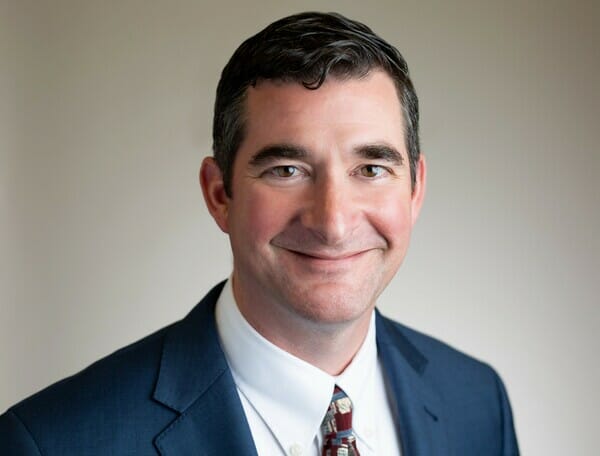
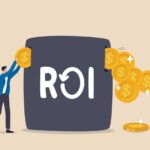
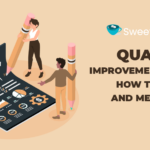
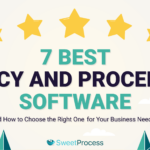
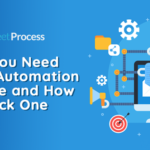


This is great. I wish to learn more.
Feel free to reach out to the guest of this podcast episode to ask your questions.